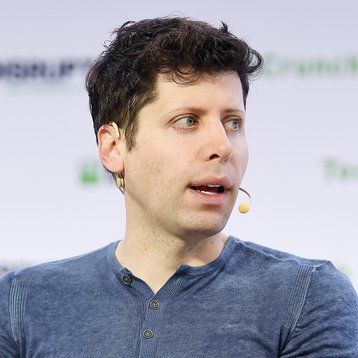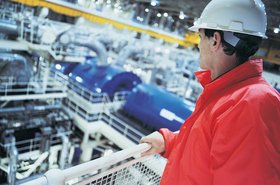OpenAI's CEO Sam Altman has said that he believes an energy 'breakthrough' is necessary to advance AI models, reports Reuters.
Altman said low-carbon energy sources including nuclear fusion are needed for the unexpected energy demands of AI, during a panel discussion with Bloomberg at the World Economic Forum in Davos, Switzerland.
"There's no way to get there without a breakthrough," he said. "It motivates us to go invest more in fusion."
Artificial intelligence is an extremely broad umbrella term that encompasses machine learning, generative AI, and artificial general intelligence - all of which are vastly different in terms of the computational power needed to support them.
The generative AI boom has seen a huge investment in the compute that will enable it. If the trend continues, the energy requirements will be monumental. According to a peer-reviewed analysis published in Joule in October 2023, current trends are set to see Nvidia shipping around 1.5 million AI server units per year by 2027. Those servers would, if running at full capacity, consume at least 85.4 terawatt-hours of electricity annually.
The author of that paper, Alex de Vries of Digiconomist estimated that AI would use more energy than the Netherlands by 2027, and explained his working to us in a DCD podcast.
AI has massive energy demands, which will only increase as it develops. The distant goal of "artificial general intelligence" (approaching human-level intelligence), would have even greater energy demands.
Altman has reasons to promote fusion. He previously invested in US nuclear fusion startup Helion Energy, providing $375 million to the company in 2021. Microsoft, the biggest financial backer of Altman's company OpenAI, which is currently providing massive cloud resources for its ChatGPT signed a power purchase agreement last year for 50MW of electricity from Helion, to be delivered by 2028.
Nuclear fusion, however, is still a hypothetical solution, with multiple public and private projects working towards it. If conquered, nuclear fusion has the potential to provide limitless sustainable power by mimicking conditions in the sun, fusion light atoms into heavier ones. Current working assumptions suggest that it remains years or decades away from reality, and some have cast doubt on Microsoft's PPA with Helion.
In June 2023, the UK Atomic Energy Authority and Cambridge University announced that they were developing a simulation of a planned fusion reactor to speed up the development of the technology. The two will create a simulation of the Spherical Tokamak for Energy Production (STEP) prototype fusion power plant, which is scheduled to create a "burning plasma" by 2035, and net electricity production by 2040.
In a fusion experiment in 2022, Lawrence Livermore Lab achieved "ignition," where a fusion reaction briefly gave out more energy than was put into it by a laser. However, the energy used to create the laser beam vastly outweighed the energy output, and fusion experiments still struggle with containing the high-energy plasma required to generate energy and convert that energy into electricity.
Altman has also voiced support for nuclear fission as a currently more practical energy source, saying he wished the world would "embrace" the solution, and is a financial backer of fission company Oklo which is set to develop two sites.
All nuclear power stations currently in use are fission reactors. At the COP28 summit, 22 countries pledged to triple the nuclear power generated in the world by 2050.Microsoft is also exploring nuclear power, having hired a second senior executive for its newly formed nuclear technologies department on January 22. Last September, DCD exclusively reported that the company was recruiting to "implement a global small modular reactor and microreactor" strategy to power data centers.
There remains some hesitancy surrounding nuclear power. Some of this is the lingering impact of the Chernobyl disaster of 1986 when the number 4 reactor exploded, causing 30 deaths in the short term and an estimated between 4,000 and 16,000 due to the long-term effects of radiation.
Small modular reactors are getting a lot more traction, however, that sector has suffered some blows of late after market leader NuScale saw a major project canceled, and has faced criticism over the viability of a second development.








